Using the Zeitwerk as the model to house A. Lange & Söhne’s first repeating wristwatch, the appropriately named Zeitwerk Minute Repeater, which just happens to be a decimal repeater, is nothing short of genius.
This repeating wristwatch is not intended to be a traditional classic. But it is intended to rock the collector’s world.
Let’s take a closer look at it using the same criteria that GaryG applied to his review of the Kari Voutilainen Masterpiece 8 Decimal Repeater.
Design
Aside from the fact that its mechanical digital display is especially suited to this style of chime, it is also particularly intuitive to read off: you organically read it left to right just like you would read a book.
Naturally, you have to love the Zeitwerk line to love this watch – which I definitely do. This wristwatch’s unique visuals, which could have broken the brand’s back had it not been executed to perfection when it launched in the uncertain economy of 2009, added another layer of inspired watch design to a collection already containing the unique Lange 1.
The most striking thing about this timepiece is, of course, its daring look, combining much that is familiar about A. Lange & Söhne and a few things that are less familiar. Digital watches have rarely enjoyed great popularity among serious watch collectors and aficionados, and, historically, most have been practically direct copies of vintage timepieces.
For the Zeitwerk Minute Repeater, A. Lange & Söhne kept to its own design code, not looking to older or other digital watches, which conventionally display the hours in an aperture on top and the minutes in one on the bottom.
When the Lange 1 was introduced, it was a fully new face in the world of watches. It was also heatedly discussed as the large date was unheard-of at that time and no other watches of that era had an asymmetrical look.
The Zeitwerk picks up where the Lange 1 left off – with its large digits faithfully following in the design of the original large date. The font of the very large, easily legible digital numerals is also the same as the double-digit large date continued throughout the A. Lange & Söhne collection.
The uncompromising look of the Zeitwerk is clear and digital, with the instantaneously jumping hours on the left and double-digit minutes on the right visible in their respective windows. A German silver (nickel silver) bridge connects the two, symbolically shaped like unfolding wings. An “auf und ab” power reserve display smiles out at the wearer from the top of the dial, while subsidiary seconds balance out the dial at 6 o’clock – familiar elements that also grace almost all of A. Lange & Söhne’s other watches.
But, above all, it’s the addition of the gong and hammers to the front of the Zeitwerk that allows the connoisseur to see something that we almost never get to see: the fascinating play of the chimes at work any time we want to (prerequisite: you have to own one or know somebody that does).
I probably don’t have to tell you that almost every other repeating wristwatch “hides” these components on the back of the watch and you really have to take the watch off to see the gongs and hammers in action.
Innovation
Ask a layman to figure out how to understand the chiming of a normal minute repeater and the answer will probably be a begrudging shake of the head. As a matter of fact, I remember my own first experiences with repeaters more than 25 years ago . . . it was slightly frustrating until I taught myself how to count along with the gongs. I still congratulate myself at the end of a long chime if I’ve done the math in my head correctly by the end of a long series of dings and dongs.
A decimal repeater is a far more intuitive system than a traditional minute repeater: it chimes blocks of minutes in units of ten rather than fifteen, just the same way we read them off on a conventional analog watch or clock.
Did I already mention that using the Zeitwerk for this timepiece was sheer genius? In fact, it is so logical I’d like to say it’s especially German in that sense.
And so was the approach to this masterpiece of a chiming timepiece.
I spoke to Anthony de Haas, A. Lange & Söhne’s head of product development, at least three different times on this subject before I ever wrote a word about the watch. It was important to me to understand all of the ins and outs of it before passing judgment of any kind.
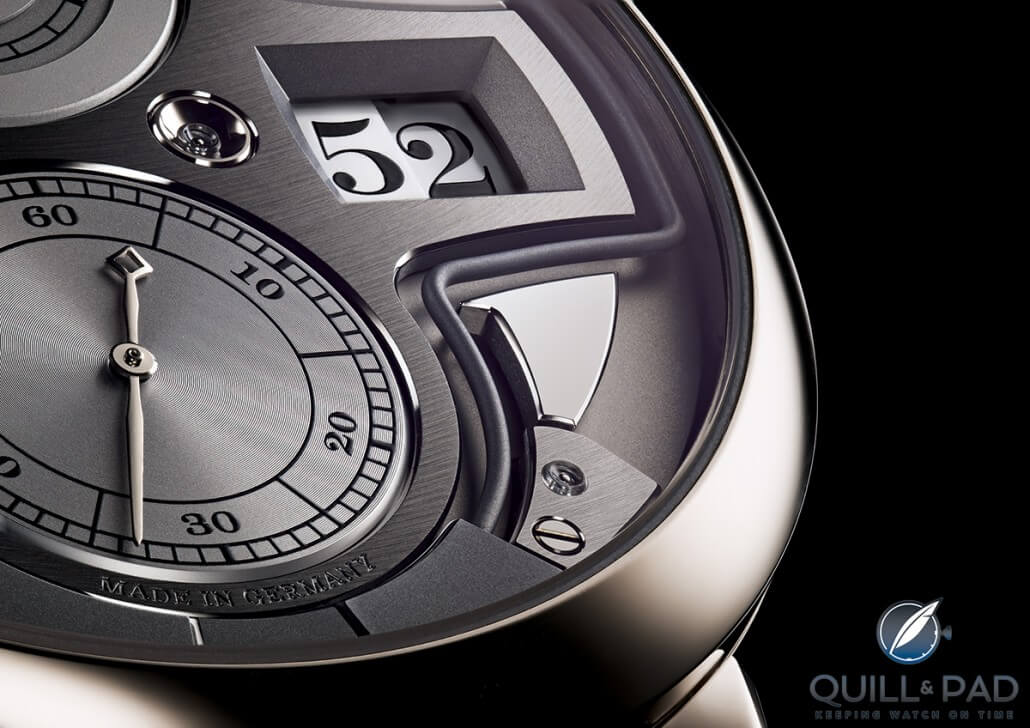
A close look at the digital minutes aperture of the A. Lange & Söhne Zeitwerk Minute Repeater with the sharply angled gong winding around below
De Haas told me that his team quickly knew the Zeitwerk would be the collection to use for the first minute repeater from A. Lange & Söhne. “It had to be special: a watch with digits is perfect for this, rather than a classic ‘face’.”
It also needed to be perfect in the way that A. Lange & Söhne typically introduces its watches: with foolproof mechanics, excellent execution, and, naturally, impeccable finishing.
The fly in de Haas’s ointment unfortunately arrived with the 2015 SIHH, which is where this timepiece made its debut. Just a week before the fair opened, a member of his team had come upon an improved technical element for the repeater’s gongs. But it was too late to incorporate this into the working prototype. As the fair is typically a very loud environment, and it is impossible to properly judge the repeater’s sound in that environment anyway, the team forged ahead with showing the finished prototype.
However, a few days into the fair the prototype had become a little less than persuasive and connoisseurs left the booth with an unfortunate less-than-stellar impression.
Despite that, having handled it a few times now over the year, I feel confident that the A. Lange & Söhne Zeitwerk Minute Repeater has attained the level of perfection its creators had envisioned it would have.
One impressive feat is how the team solved the space issue. “The movement designers did an amazing job!” de Haas exclaimed when I inquired as to the hardly changed the size of the movement as compared with the Zeitwerk Striking Time of 2013, which boasts an en passant chime.
The Zeitwerk Minute Repeater’s 771-component Caliber L043.5 comes in only 1.7 mm larger in diameter and 0.9 mm higher than Caliber L043.2 of the Zeitwerk Striking Time, which contains 528 components. That is what I call a feat.
This can at least partially be chalked up to how the movement space was used. “The first challenge would normally have been to add a secondary spring for the minute repeater, which you need to wind using a slide,” de Haas explained. “But there was simply no space for this and another spring barrel for the minute repeater!”
Making a slide water-resistant was also an issue, and de Haas explained that water resistance would additionally dampen the sound of the repeater more.
The answer was an elaborate pusher system to activate the strike in place of a slide.
The next challenge was the absence of the traditional second spring barrel. Classic minute repeaters generally have one barrel for the movement’s energy plus another for the repeater as chiming takes an enormous amount of energy.
Nonetheless, using the constant force energy already inherent to the Zeitwerk’s movement, the team managed 36 hours of power reserve with just one spring barrel. And to preserve this power reserve, de Haas’ team created a security system that prevents the chime from striking if the movement has less than 12 hours of power reserve remaining. This point is indicated on the dial’s power reserve display with a red dot.
A. Lange & Söhne’s watchmakers and engineers worked on this timepiece for a full six years and the result shows.
Operation
Another precautionary element A. Lange & Söhne built into the movement prevents the crown from being pulled out while the Zeitwerk Minute Repeater is chiming. As with most highly technical and complicated movements, pulling the crown out at the wrong time could potentially harm the movement.
And, once again to preserve precious power reserve, the engineers have instructed the movement not to move the disks that display the time until the gongs chiming the time have stopped ringing.
The maximum succession of tones – which occurs at 12:59 – lasts for a full 20 seconds. This system delays the change of numerals until the chiming is over, thereby also ensuring that what you are hearing the gongs and hammers playing is what you are also seeing on the watch’s dial.
“Also, we thought it would be a bit silly if suddenly your watch is showing 1:00, but your watch is still striking 12:59,” de Haas quipped in his usual joking manner.
Activating this repeater could not be any easier: just press the button. No slide, no loading of the spring barrel. The crown placed at 2 o’clock on the case sets and adjusts the time. No fuss.
Finishing
What is there to say here except that this is truly a product of A. Lange & Söhne’s finishing department with all of the bells and whistles it knows how to apply.
Most connoisseurs of the highest end of the luxury scale already know that the Glashütte-based brand pretty much boasts the best finishing you can find in a serial watch. Other contenders for this title like Romain Gauthier and Kari Voutilainen make about 10 percent (and less) of the number of watches that A. Lange & Söhne makes annually, which is currently estimated at about 3,000 pieces per year.
Caliber L043.5 exhibits all of the amazing elements that make up a movement made by A. Lange & Söhne, and that in the beautifully executed manner that we have come to know and love – a manner that has even won over staunchly Swiss-oriented connoisseurs.
The hand-engraved balance cock underneath the beautifully tin-polished swan-neck spring is the first thing that hits the eye. Delightfully, the movement designer has chosen to provide a bit of symmetry with the cock on the other side of the balance being hand-engraved with the same pattern. This is unusual in one of the brand’s movements, and it is beautiful.
Three screw-mounted gold chatons contain three of the total of 93 jewels in this movement, of which several are easily visible through the case back. Thermally blued screws provide yet more color.
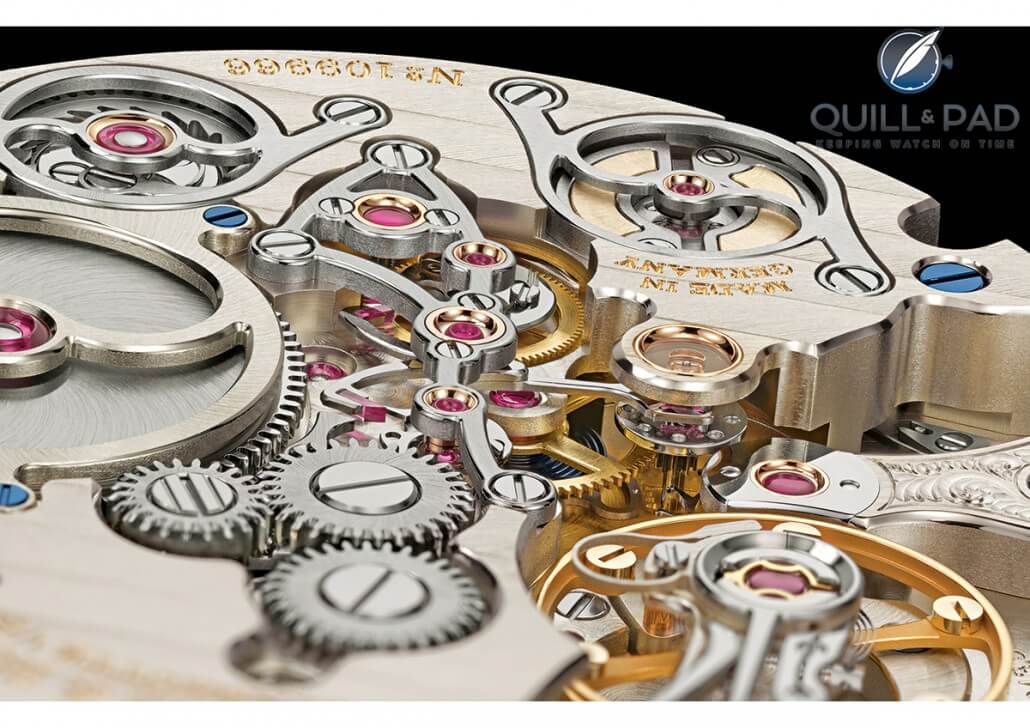
You could gaze for hours at the impeccably finished three-dimensionality of the movement powering the A. Lange & Söhne Zeitwerk Minute Repeater
The warm tones of the untreated German silver three-quarter plate decorated with Glashütte ribbing – which is côtes de Genève applied at a slightly different angle – is only broken by the shiny anglage of the beveled edges, perfectly executed of course.
Take a look at those inside angles surrounding the three gear wheels and large screws just to the right of the balance cock! That is unadulterated mechanical beauty.
Sound
The team at A. Lange & Söhne made some choices that do not help carry the sound of the chiming gongs very far (platinum case and sapphire crystal case back for example).
And as Joshua pointed out in A Watch Nerd’s 7 Favorite “Digital” Watches, the gongs are “interestingly shaped.” I do believe that in conjunction with the sound-dampening platinum case, the shape of these interesting-looking gongs could well have something to do with the quieter volume of this repeating wristwatch.
I realize that de Haas will disagree with me, but I believe the combination of this could be factors in the resulting quieter volume.
However, even though the sound is a bit quieter than many repeaters we have heard of late – such as Jaeger-LeCoultre’s marvelous examples and, of course, the Audemars Piguet Supersonnerie – I find the musical quality and tonality of the gongs exquisite.
As repeaters go, too, there is hardly any extraneous noise.
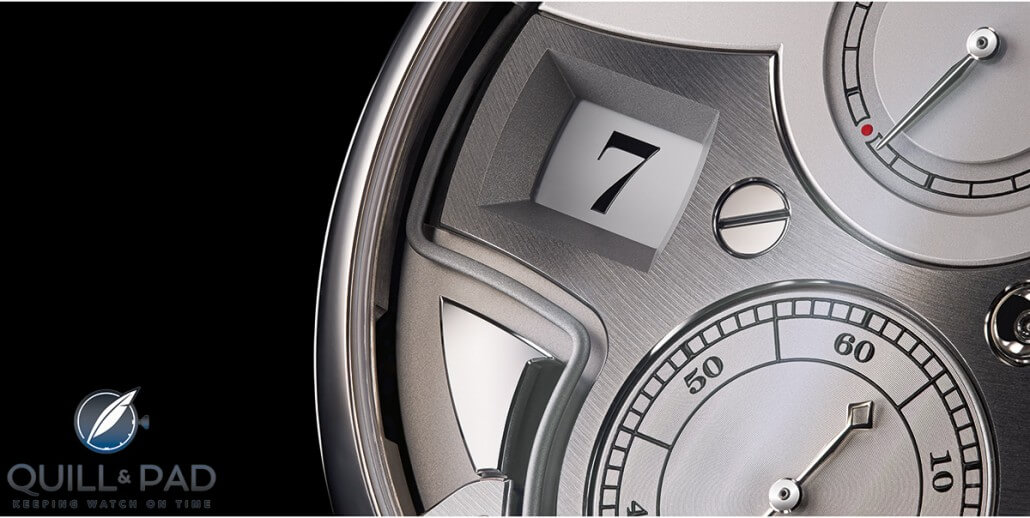
A close look at the digital hours aperture of the A. Lange & Söhne Zeitwerk Minute Repeater with the sharply angled gong winding around below
Overall Impressions
While I was perhaps less enthusiastic about this watch than I’d like to have been as the 2015 SIHH closed thanks to what I described above, after having had the chance to handle it again at the end of the year, I have now become a big fan.
I love the fact that the repeater was added to the Zeitwerk collection, which is truly a marvelous timepiece that deserves to become a classic.
Even if the gongs do not come across as the loudest, I find myself quite impressed by their musical quality and regularity. Personally, I wouldn’t want a repeating watch on my wrist to be much louder anyway . . . there is no volume button, and, truly, not everyone in the wearer’s vicinity might need or want to hear it.
In short, the A. Lange & Söhne Zeitwerk Minute Repeater is more fascinating than even a tourbillon to my senses with its musical play put out on display on the front for anyone to see right along with the changing of the digital time once every minute.
For more information, please visit www.alange-soehne.com/zeitwerk-minute-repeater.
Quick Facts A. Lange & Söhne Zeitwerk Minute Repeater
Case: 44.2 x 14.1 mm, platinum
Movement: manually wound Caliber L043.5 with constant force and free-sprung balance spring; 2.5 Hz/18,000 vph
Functions: jumping hours and minutes, running seconds; power reserve, decimal minute repeater
Price: $467,700
Trackbacks & Pingbacks
-
[…] and more, buyers have become used to purchasing everything online. So why not an A. Lange & Söhne Zeitwerk Minute Repeater for […]
-
[…] marriage of digital display with decimal repeater makes the most sense. Not surprisingly, the Zeitwerk Minute Repeater with decimal strike was a big success, so to follow it up A. Lange & Söhne decided to make the […]
-
[…] admit it: I didn’t think that A. Lange & Söhne would have been able to top the Zeitwerk decimal minute repeater of 2015 that I loved so […]
-
[…] of the big introductions of 2015 in the collector’s world was A. Lange & Söhne’s Zeitwerk Minute Repeater: a watch that both shows and chimes off the time using a “decimal” format of hours, tens of […]
-
[…] Recently, GaryG presented his take on the Kari Voutilainen Masterpiece 8 while Elizabeth wrote about the A. Lange & Söhne Zeitwerk Minute Repeater. […]
-
[…] of the big introductions of 2015 in the collector’s world was A. Lange & Söhne’s Zeitwerk Minute Repeater: a watch that both shows and chimes off the time using a “decimal” format of hours, tens of […]
Leave a Reply
Want to join the discussion?Feel free to contribute!





















































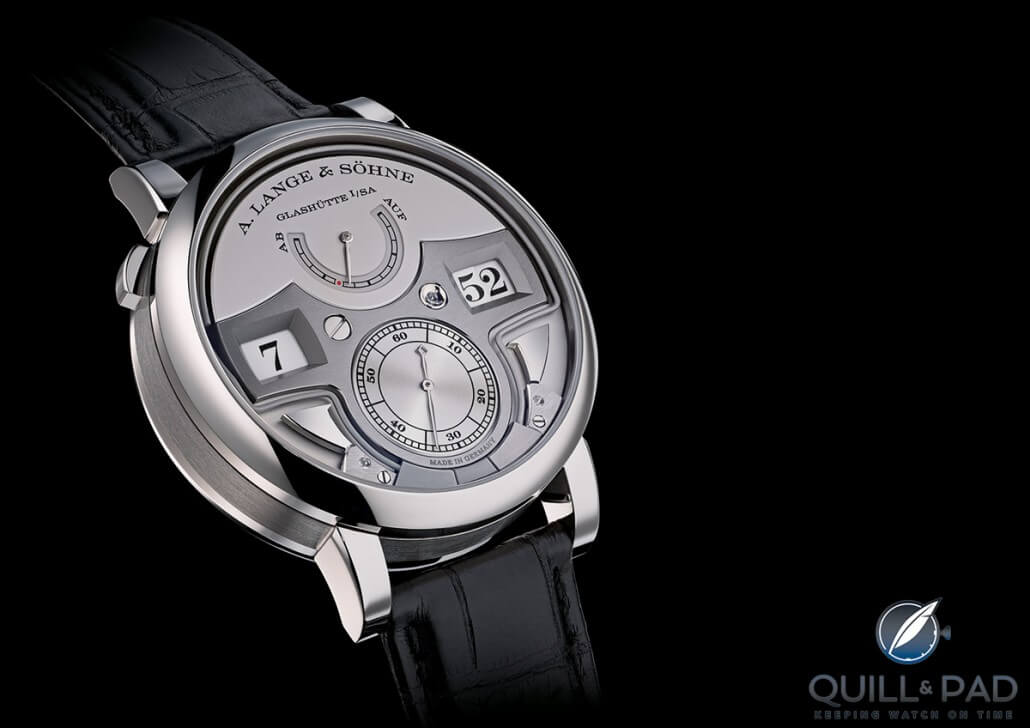
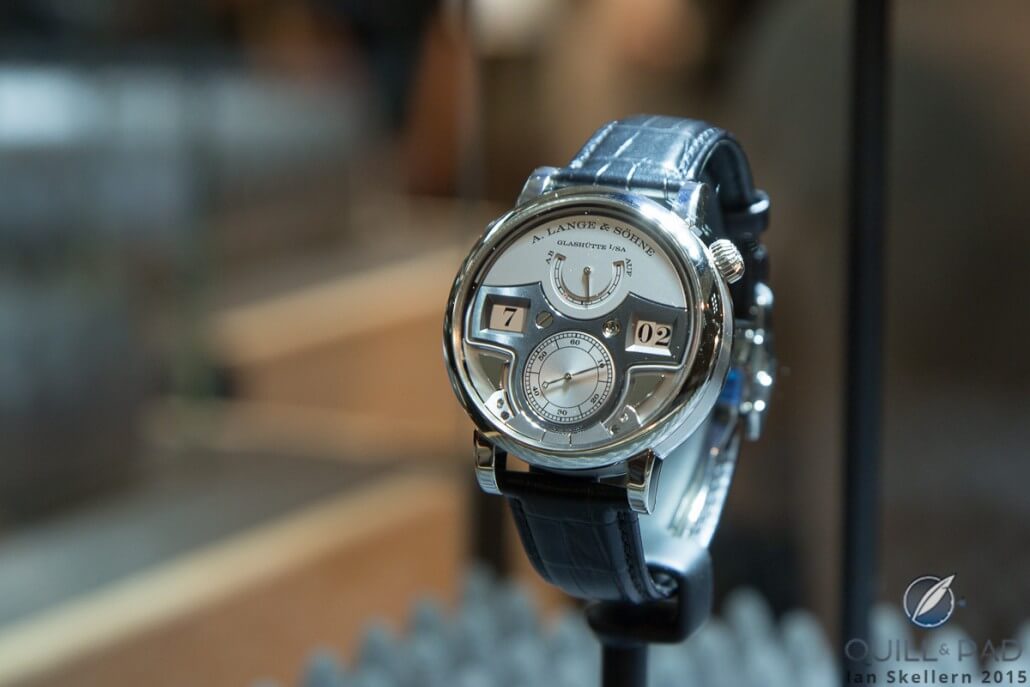
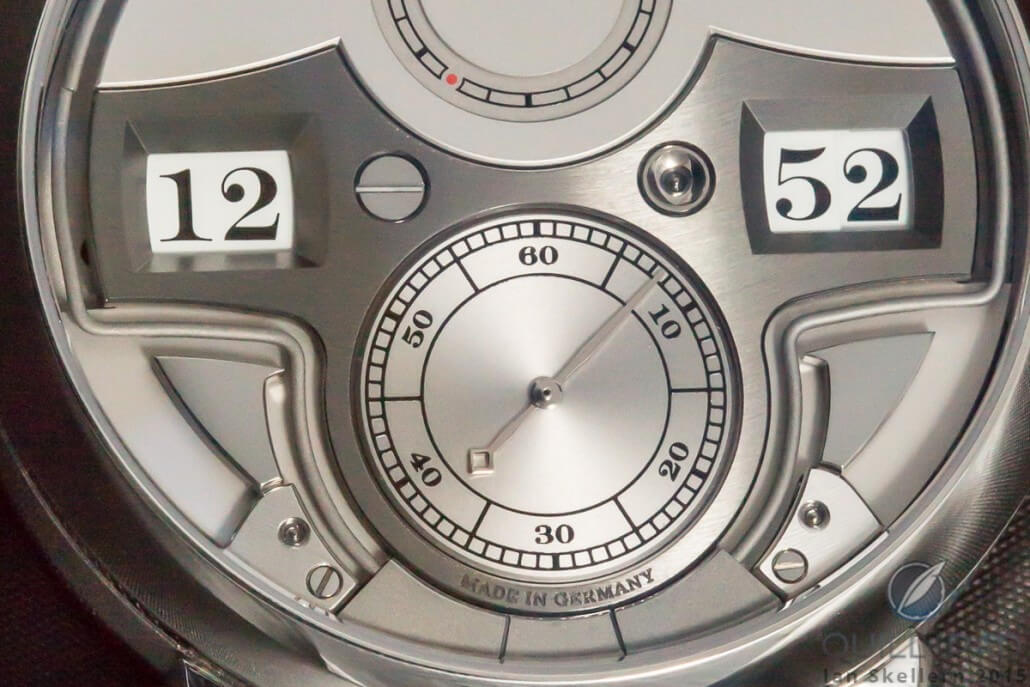
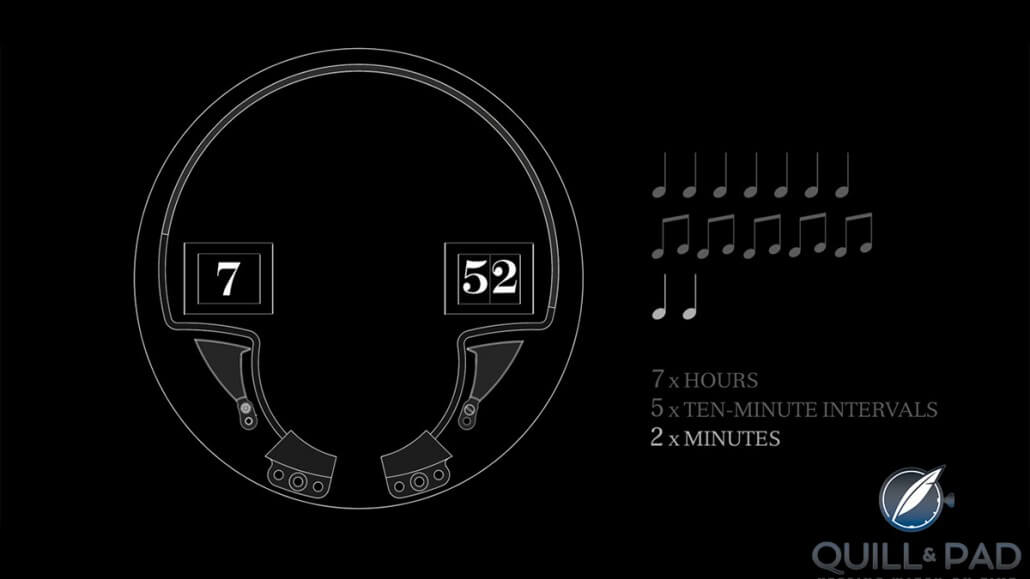
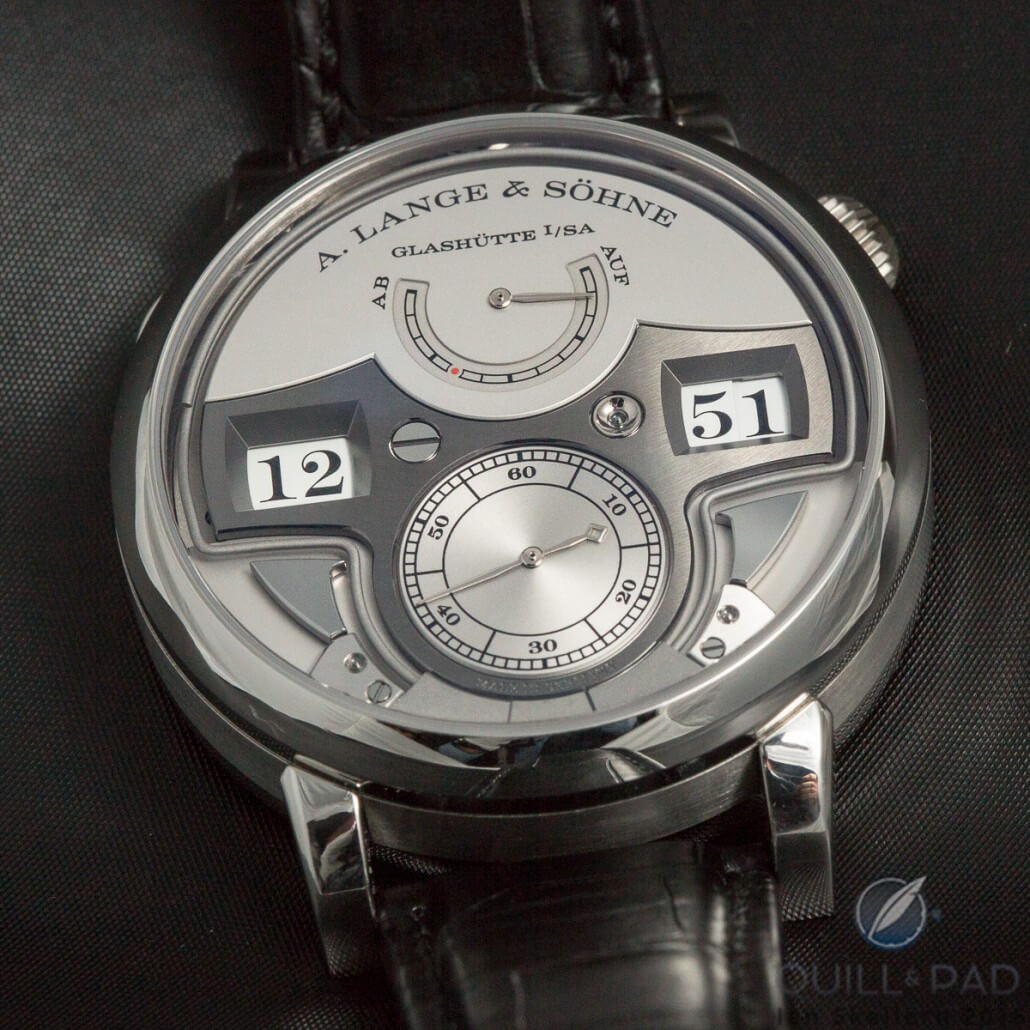
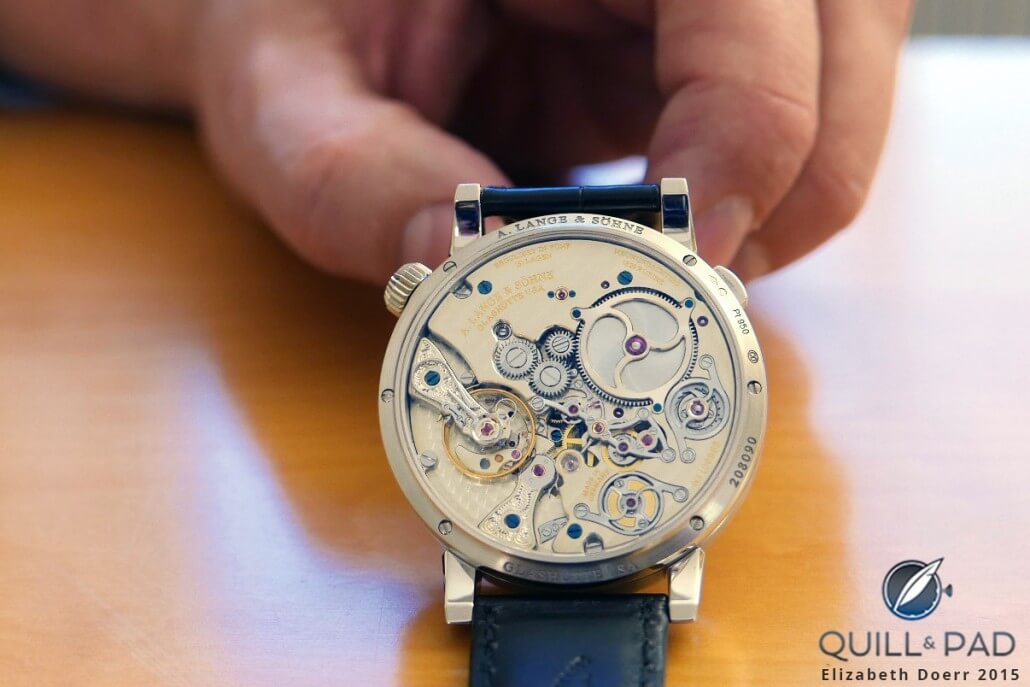
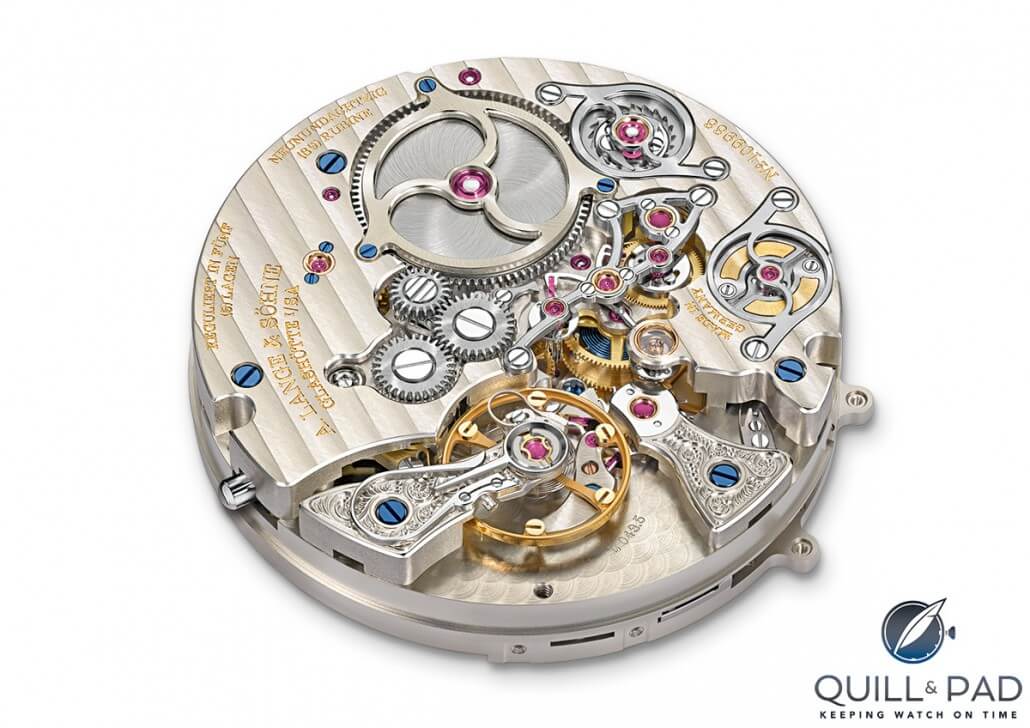
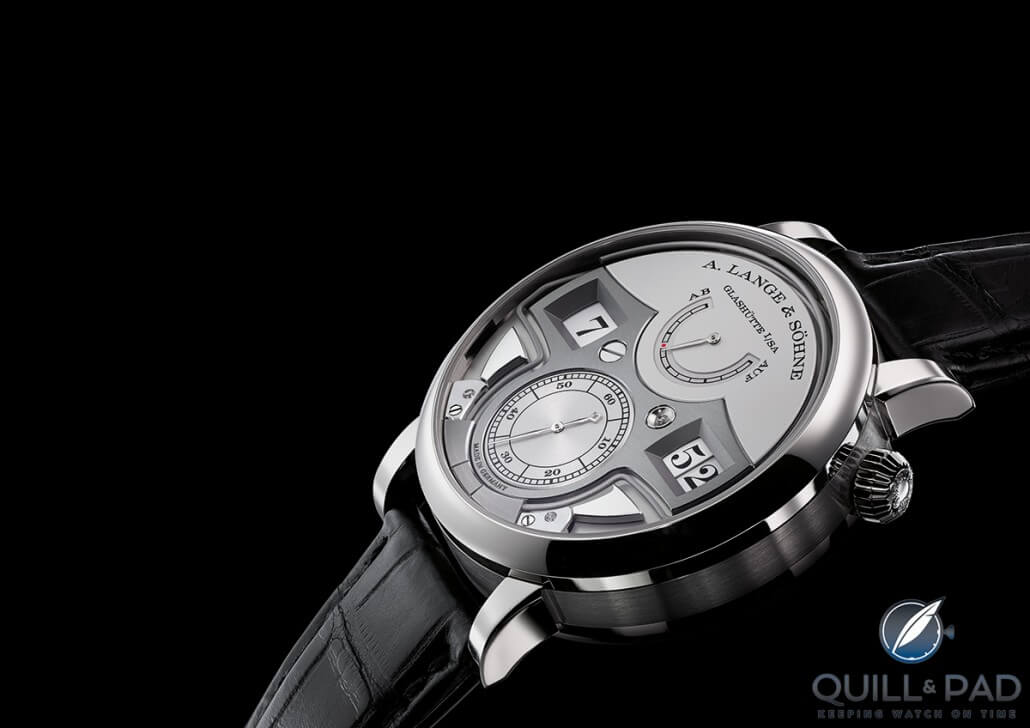
Sweet jesus, if only date windows could be made like that.
German silver is ALPACA! The word ‘silver’ is misleading and shouldn’t even be mentioned, as it has nothing to do with the metal ‘Ag’!
I would hope that most of our readers know that metal alloy known as “German silver” contains no silver, but you are right to bring that up.
The “silver” refers to the alloy’s silvery appearance. It is usually composed of around 60% copper, 20% nickel and 20% zinc. It is also known as nickel silver, mailechort, Argentan, new silver, nickel brass, albata, alpacca, or electrum.
According to Wikipedia, the name “German silver” refers to its development by 19th-century German metalworkers in imitation of the Chinese alloy known as paktong (cupronickel). All modern, commercially important nickel silvers (such as those standardized under ASTM B122) contain significant amounts of zinc, and are sometimes considered a subset of brass.
Thank you. I did not know this!